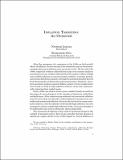| dc.contributor.author | Loayza O., Norman | |
| dc.contributor.author | Soto, Raimundo | |
| dc.date.accessioned | 2019-11-01T00:01:31Z | |
| dc.date.available | 2019-11-01T00:01:31Z | |
| dc.date.issued | 2002 | |
| dc.identifier.isbn | 956-7421-102 | |
| dc.identifier.uri | https://hdl.handle.net/20.500.12580/3664 | |
| dc.description | After the emergence of a consensus in the 1980s on the harmful effects of inflation, the last decade of the twentieth century witnessed a market reduction in inflation rates across the world. By the end of the 1980s, empirical evidence collected from large cross-country analyses and numerous case studies indicated that the negatice effects of high and variable inflation on macroeconomic stability, economic growth, and income distribution largely outweigh the potential benefits derived from financing fiscal deficits through monetization. | |
| dc.format | .pdf | |
| dc.format.extent | Sección o Parte de un Documento | |
| dc.format.medium | p. 01-21 | |
| dc.language.iso | eng | |
| dc.publisher | Banco Central de Chile | |
| dc.relation.ispartof | Series on Central Banking, Analysis, and Economic Policies, no. 5 | |
| dc.rights | Attribution-NonCommercial-NoDerivs 3.0 Chile | * |
| dc.rights.uri | http://creativecommons.org/licenses/by-nc-nd/3.0/cl/ | * |
| dc.subject | INFLACIÓN | es_ES |
| dc.subject | MACROECONOMÍA | es_ES |
| dc.title | Inflation targeting: an overview | |
| dc.type.doc | Artículo | |
| dc.file.name | BCCh-sbc-v05-p001_022 | |


